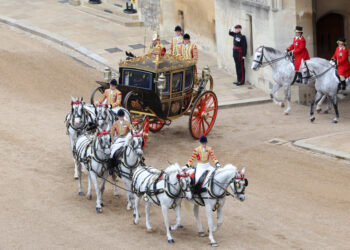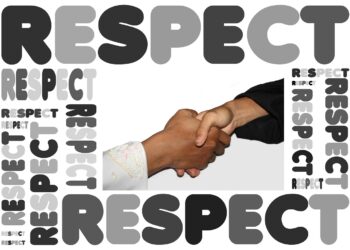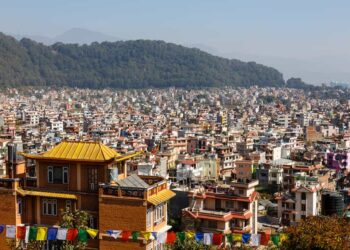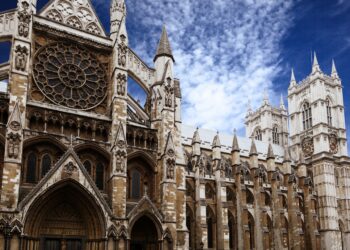
When His Royal Highness Prince William and Miss Catherine Middleton publicly announced their engagement (16th November 2010), it was no doubt that their nuptial ceremony is to be regarded as one of the most influential and remarkable royal events of the 21st century.
Protocol-wise, it was an event without much precedent: the young heir to the throne marrying an upper-middle class, roman catholic commoner young lady with whom he got acquainted during their university studies at St. Andrews in Scotland: protocol experts all around the globe were intrigued to witness this one-of-a-kind wedding of the century, as it is still considered to be quite often.
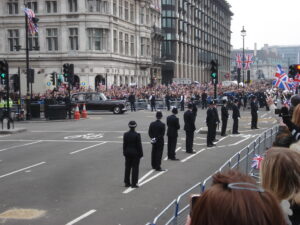
When the Royal House of Windsor announced that the wedding ceremony is to be held at Westminster Abbey- as it was predicted by many- and as the date fell on a Friday (29 April, 201), the British Government (namely the then Prime Minister James Cameron) declared the day a public holiday in England, Wales and Northern Ireland to give a chance to all citizens of the United Kingdom to celebrate the event in unison. Regarding the Government’s often troubled relations with Wales and Northern Ireland, this gesture was an act of class and most definitely, an act of diplomacy towards peace.
The wedding invites were then sent out: a total of 1900 people were on the official guest list. According to royal protocol, the list included numerous dignitaries from all over the world (and especially from the Commonwealth), politicians, diplomats and even some celebrities, who, of course, were also regarded as appropriate for such a prestigious event. Friends and family members also took up hundreds of invites, although it is important to note that Sarah, Duchess of York was not invited to neither the ceremony nor the private gathering afterwards as a result of her ongoing financial and media scandals.
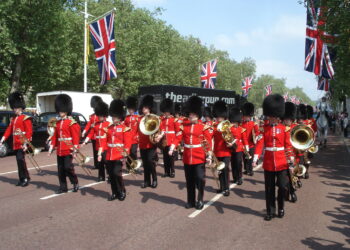
On the top of every invitation sent out by the Royal House of Windsor, the coat of arms of the member financially responsible for the event is to be seen: on this particular one, the crest of Her Majesty, the Queen’s coat of arms. Even though the couple’s office had set up a website specifically for the upcoming wedding, to inform and help guests with the dress code (on the invite, uniform, morning coat and lounge suit were stated) and any additional information may be required, the RSVPs were expected to be sent in very much according to tradition and protocol: via post, to the Lord Chamberlain’s Office at Buckingham Palace.
The seating arrangements are a delicate matter on every wedding: the royal weddings are no exception. Guests arrive and take their seats in designated time bars: rank, title and occupation are to be taken into account. First, the dignitaries: politicians, soldiers, diplomats. Then come friends of the bride and groom, who were personally invited by the pair. They are followed by the parents of the bride and groom, close family members and finally, the groom with his best man. The reigning sovereign, Her Majesty the Queen is the last one to arrive at any event and the first one to leave.
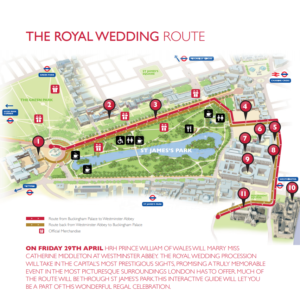
According to the customs and traditions in the Church of England, the guests sit on the two sides of the church, facing each other. Close friends and family members of the bride and groom sit in the front, both on the left and right. Further along the seats sat the guests without titles or strong personal connections to the couple, and of course, the church choir. Since it is prohibited to turn the back on Her Majesty, the seat in front of the Queen is always left empty (if she is not seated in the very first row). Members of the Windsor House and other foreign royal families were seated together, as an important sign of unison at the wedding.
It is most natural that when it comes to a wedding, the bride’s choice of gown is always the subject of interest: the designer, Sarah Burton (under the brand of Alexander McQueen) Catherine Middleton had chosen to design her dress, had to meet a larger number of expectations.
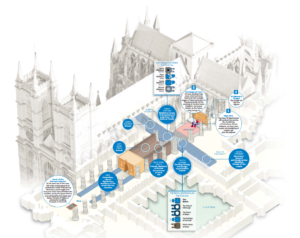
Furthermore, she had to take the royal traditions into account: at every royal wedding, it is expected that the dress has details showing traditional English sewing techniques, floral patterns, materials, and the overall outcome should fit the ecclesiastical rules of the Church of England as well: bare shoulders and low cut backs are strictly forbidden and against protocol. The dress, which turned out to be one of the most sought-after models of all time, was on display at Buckingham Palace as part of the annual Summer Exhibition of the Royal Collection. The tiaras worn by royal brides are always personally chosen and approved by Her Majesty, and protocol dictates that since the wedding of Queen Victoria and Prince Albert of Saxe-Coburg, all brides shall carry myrtle in their bouquets. The groom is expected to be wearing his uniform, if he holds a rank at the military or a bespoke suit if not: Prince William wore the red tunic of Colonel of the Irish Guards during the wedding ceremony.
The ceremony started with Ms. Middleton walking to the altar with her father and ended with her laying the bouquet at the Tomb of the Unknown Warrior- another royal tradition of great importance. The ceremony was held by the former Archbishop of Canterbury, Rowan Williams.
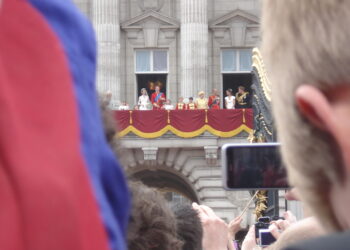
The tradition of the royal first kiss is only 40 years old in 2021: this public display of emotions was first seen at the wedding of Prince of Wales and the late Princess Diana. The Duke and Duchess of Cambridge followed this tradition of breaking the rules of protocol for a few seconds: they exchanged two kisses on the balcony of Buckingham Palace, in front of a joyful crowd of thousands.
The wedding of the Duke and Duchess of Cambridge is still considered to be one of the most successful and most popular royal events of all time: a total of almost 37 million people in the UK watched the live broadcast on television, and reruns and anniversary specials are continuing to be exceedingly popular too- quoting the Archbishop of Canterbury: “After all, here is the stuff of which fairy tales are made: a prince and princess on their wedding day.”

